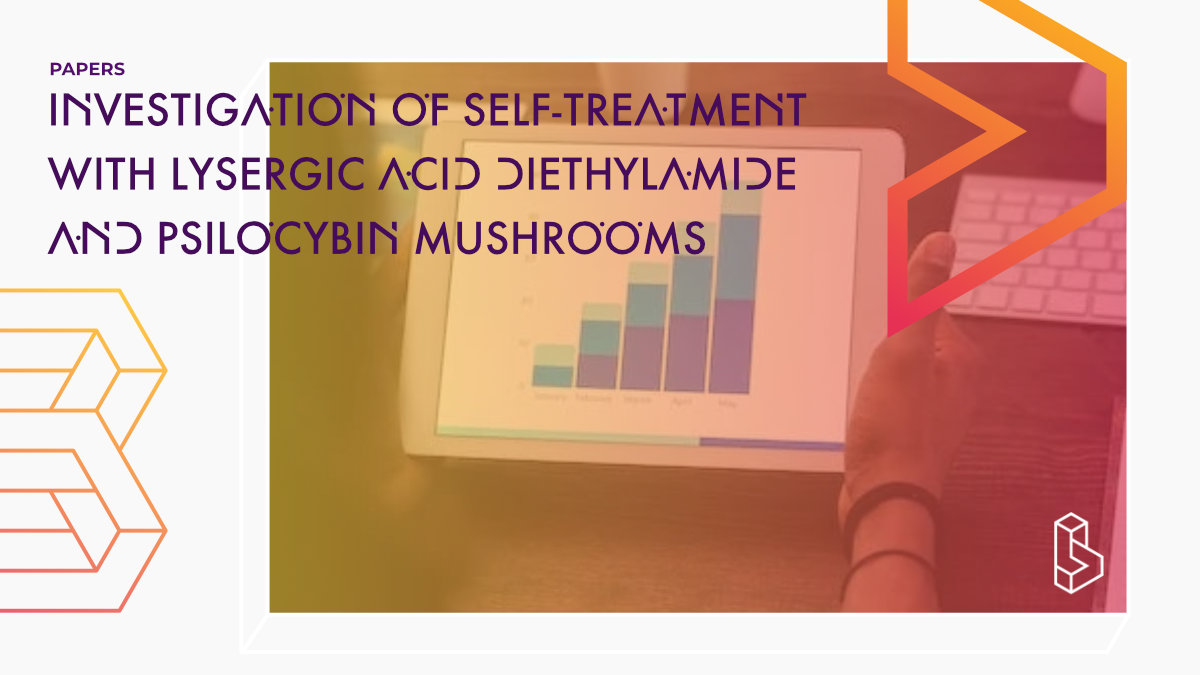This analysis of survey data (n=3364, Global Drug Survey 2020) finds a positive relationship between LSD and psilocybin use for self-treatment, and well-being outcomes, particularly insight and mood. A quarter of respondents reported adverse effects.
Abstract
“Background: Growing numbers of people are using psychedelics for personal psychotherapy outside clinical settings, but research on such use is scarce.
Aims: This study investigated the patterns of use, self-reported outcomes and outcome predictors of psychedelic ‘self-treatment’ of mental health conditions or specific worries/concerns in life.
Methods: We use data from the Global Drug Survey 2020, a large online survey on drug use collected between November 2019 and February 2020. In all, 3364 respondents reported their self-treatment experiences with lysergic acid diethylamide (N = 1996) or psilocybin mushrooms (N = 1368). The primary outcome of interest was the 17-item self-treatment outcome scale, items reflecting aspects of well-being, psychiatric symptoms, social-emotional skills, and health behaviours.
Results: Positive changes were observed across all 17 outcome items, with the strongest benefits on items related to insight and mood. Negative effects were reported by 22.5% of respondents. High intensity of psychedelic experience, seeking advice before treatment, treating with psilocybin mushrooms and treating post-traumatic stress disorder were associated with higher scores on the self-treatment outcome scale after averaging values across all 17 items. Younger age, high intensity of experience and treating with LSD were associated with increased number of negative outcomes.
Conclusions: This study brings important insights into self-treatment practices with psychedelics in a large international sample. Outcomes were generally favourable, but negative effects appeared more frequent than in clinical settings. Our findings can help inform safe practices of psychedelic use in the community, and inspire clinical research. Future research can be improved with utilisation of prospective designs and additional predictive variables.”
Authors: Emma I. Kopra, Jason A. Ferris, Adam R. Winstock, Kim P. C. Kuypers, Allan H. Young & James J. Rucker
Summary of …
Psychedelics have been used for healing since prehistoric times in some cultures but were banned by the UN Convention on Psychotropic Substances in 1971. Millions of people worldwide take psychedelics every year, most commonly in informal settings. With the recent resurgence of scientific research on psychedelics, there is evidence that the use of these drugs in the community has also slowly increased over the past decade. This trend will continue as the public’s awareness of their therapeutic potential grows.
The user’s mindset, individual characteristics, and physical and social environment are essential in determining the nature of psychedelic experiences. Although there is a lack of research on psychedelic use intended explicitly for the self-treatment of emotional distress and psychiatric concerns, overall outcomes are more favourable than treatments offered by medical professionals.
Study details
Compounds studied
Psilocybin
LSD
Topics studied
Population Surveys
Public Health, Prevention & Behaviour Change
Study characteristics
Re-analysis
Survey
Participants
3364
Humans

